Fiona Stanley Hospital
HASSELL was tasked with the massive undertaking of completing the Fiona Stanley Hospital in Perth, Australia.
The design for Fiona Stanley Hospital feels anything but institutional. Instead, green vistas, sculpture and sunshine are a healthy part of the plan.
The Fiona Stanley Hospital was the largest single building project ever undertaken in Western Australia at the time of its development. The $2 billion project includes a 783-bed hospital, extensive teaching and research facilities and a rehabilitation centre –all in one cohesive, green precinct.
For the state government, the primary goal was to open a facility with superlative health services for the people of Western Australia. The Fiona Stanley Hospital Design Collaboration (FSHDC) – comprising HASSELL, Hames Sharley and Silver Thomas Hanley – went beyond the brief to design a place where comfort and care are inextricably linked.
The FSHDC design draws on international evidence-based research on the best healing environments. It demonstrates that green vistas, sunlight and natural surroundings can improve the physical and psychological wellbeing of patients, decrease the length of their stay and reduce the need for pain relief.
The environment at Fiona Stanley Hospital feels anything but institutional. Instead, the hospital sits comfortably within its environment, inviting people to experience and enjoy their surroundings. It includes views of green landscapes, sculptures to contemplate or climb, and park bench-style seating inside.
The hospital’s intensive and critical care units are connected to serene outdoor courtyards, so patients who would otherwise spend their days facing banks of medical equipment can now get fresh air and sunshine.
Similarly, parents and kids can enjoy the pediatric playground – instead of an impersonal waiting room – while they wait for anxiety-inducing test results or for family members to emerge from the procedural areas.
The FSHDC team worked with health care staff, patients and the public for almost seven years to make this exceptional hospital happen. The result is a facility that benefits many users, on many levels.
For example, simple circulation routes through the hospital help people navigate with confidence and avoid the labyrinthine feel of facilities with complex corridor systems. The building also offers extensive views to the outdoors – not the tight, enclosed spaces you’d expect from a hospital.
As part of the design process, the design team also created prototype patient and procedural rooms for review by clinicians and patients. HASSELL wanted to know how these spaces would be used. Were the cupboards the right height? Could the way patients move through triage be improved? These details mattered to the design team – because they matter to those using the spaces we design.
The 140 bed State Rehabilitation Service is a significant part of the integrated health precinct master plan for the Fiona Stanley Hospital site. The design is the outcome of extensive consultation with the people who will use it – rehabilitation staff, volunteers and, of course, patients. The result will be a building designed around the needs of patients and their carers with strong links to the landscape around it.
Inpatients at the SRS can require treatment there for long periods, sometimes up to six months and occasionally even longer. The building effectively becomes their home. This heavily influenced both the building design and materials and the landscape architecture of the site.
The building fabric moves progressively from a domestic look and feel to a more clinical one. There is a transition of texture and materials that represent the process of recovery.
Physical activity is the key to treatment for many of the patients. Watching others exercise motivates patients to exercise themselves. To take advantage of this, the therapy centers in the building are integrated into the public spaces.
Inside and outside the building, the design allows patients to tackle physical features they will encounter once they leave the SRS – curbs, unstable surfaces, slopes and stairs. Discrete markers in the pavements allow patients to measure their recovery and set themselves goals.
The SRS is a unique response to a specific functional brief. The constraints of the project have been thoughtfully considered, developed and translated as innovative design applications. The successful design of the SRS building embodies the values and aspirations to practice medical excellence, in philosophy, form and functionality.
HASSELL is responsible for the conceptual design for the SRS building, the shell and core and the landscape architecture.
Architect: HASSELL
Photography: Peter Bennetts

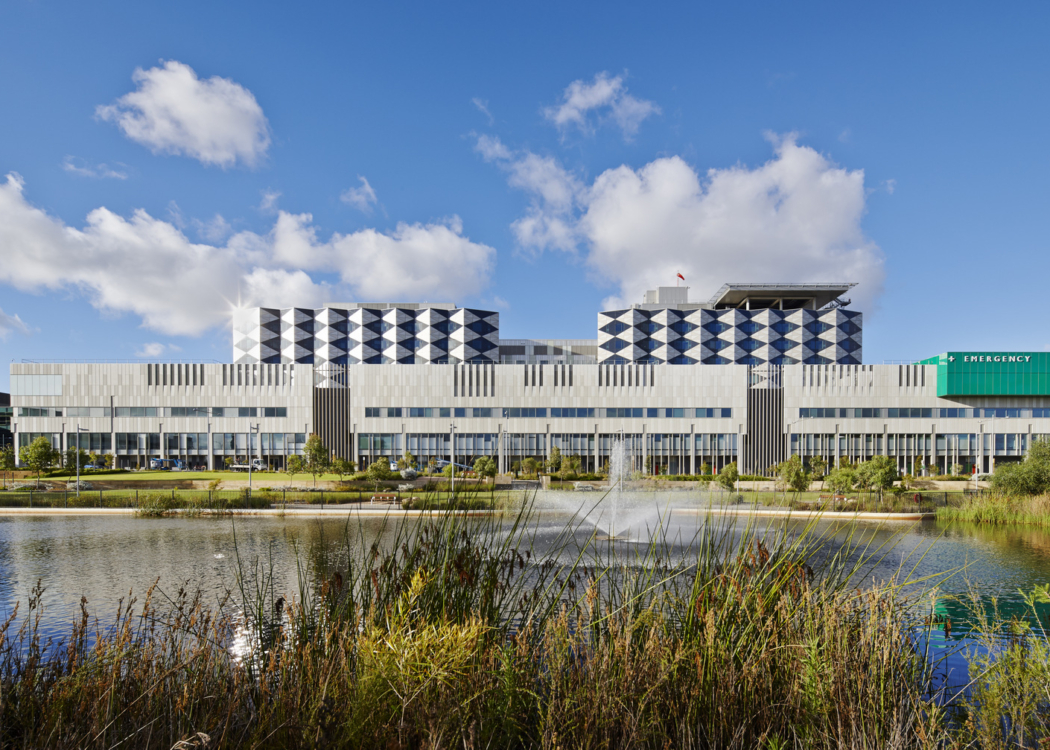
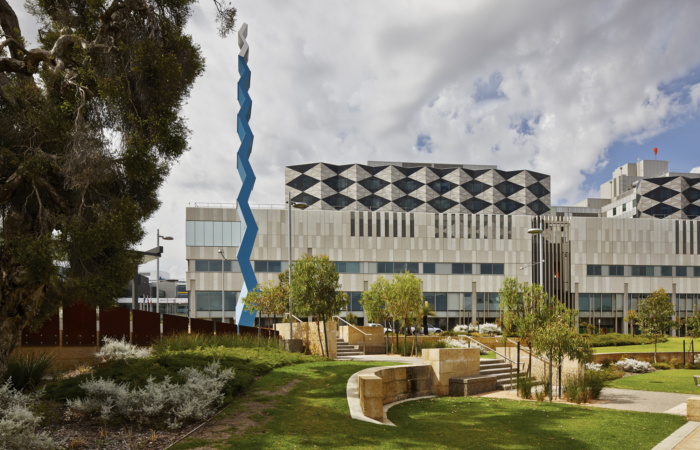


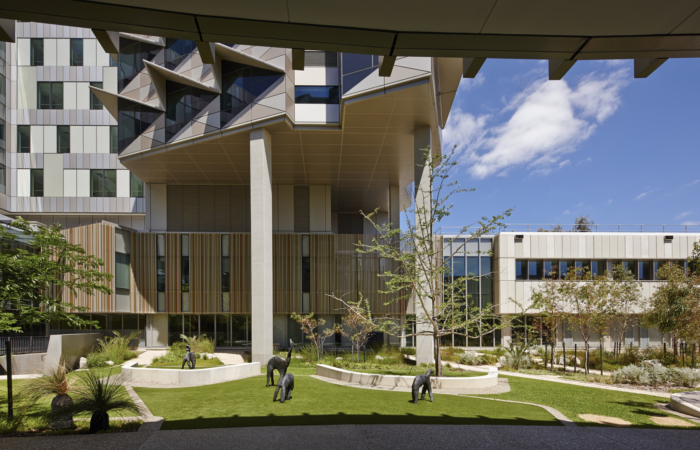
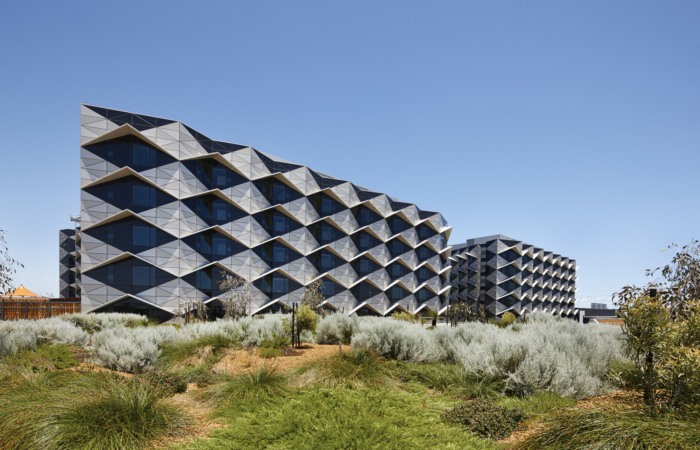

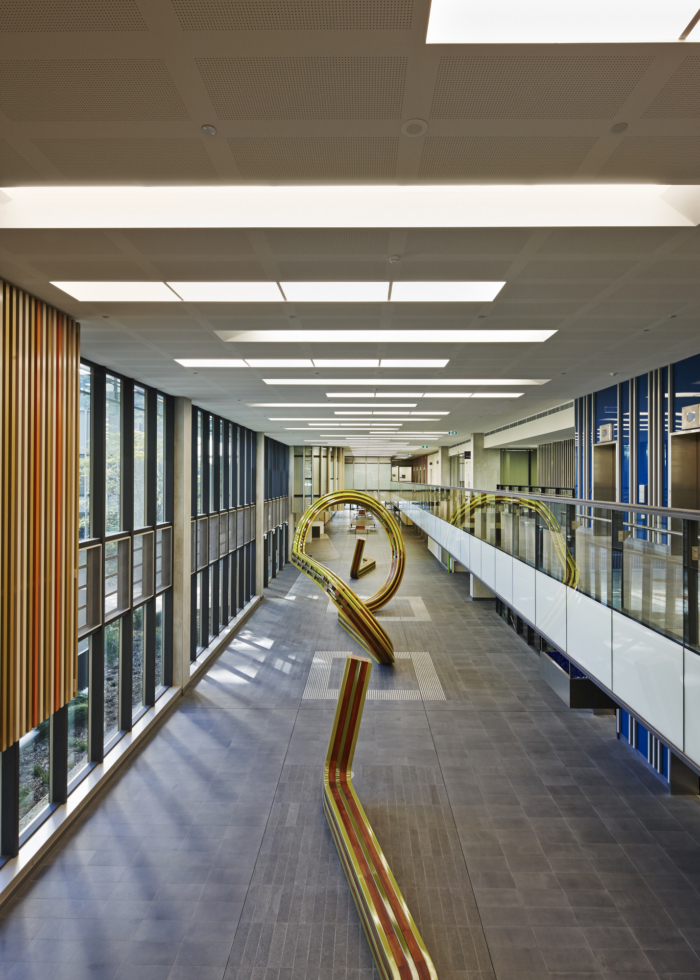



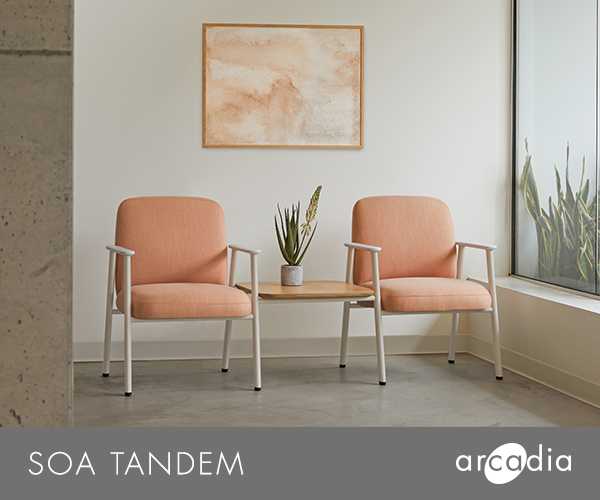
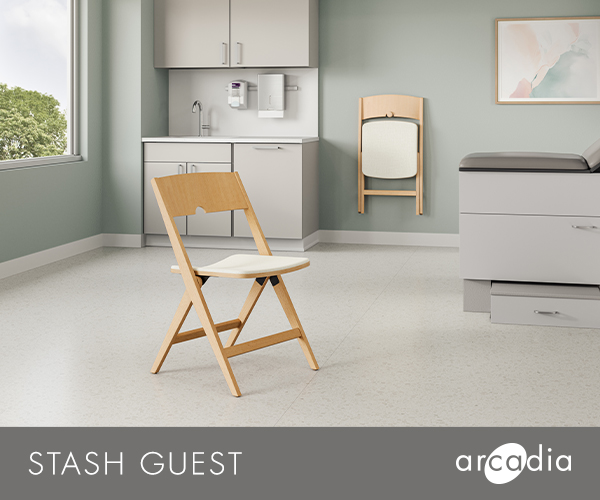








Now editing content for LinkedIn.